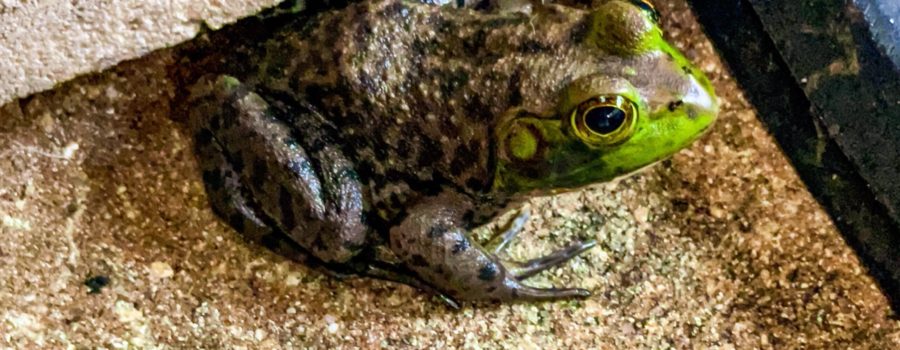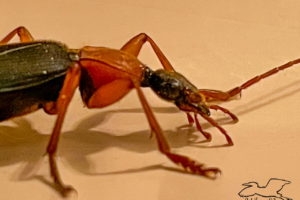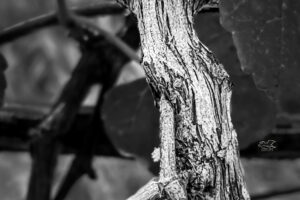More About My Beautiful Friend the American Bullfrog

This wasn’t a great year in central Florida for frogs. We started out the spring with a three to four month long drought that dried up a lot of our small ponds and slow running streams. I’m sure that the drought killed a lot of the frog tadpoles, which meant fewer frogs by summer and fall. By this time of the year frog sightings are becoming more unusual anyhow, so I was actually surprised and pleased to come home one afternoon and find this small American bullfrog (Lithobates catesbeianus) warming itself in the sun outside my turtle pond. It had been kind of chilly (into the lower forties) the past few nights, and that usually makes the reptiles and amphibians very slow. I’m not sure if this little one was too cold to move much, if it was used to activity out in that area (my small dogs go out there sometimes), or if the afternoon sun just felt too good to move out of, but whatever the reason, it was quite unperturbed by me and my camera.

This particular frog turned out to be a juvenile female. Her small size easily gave her away as a juvenile, but so did her spotted body coloration. As they mature, these frogs tend to have a more solid color with less and less spotting. Depending on the temperatures and food availability the juveniles can progress to breeding adults within one to three years. It is estimated that American bullfrogs generally live to be 8-10 years old in the wild, although one frog did live to be 16 years old in captivity. Females can be easily distinguished from males, even when juveniles by both their ear size and their belly coloring. Female American bullfrogs have an ivory or cream colored underside while males have yellow undersides. Sometimes it’s not all that easy to see their bellies, though, especially when they are submerged, so another good way to tell males from females is ear size. These frogs have an external ear located just behind the eye that is covered by a thin membrane. In females the ear will be similar in size to the eye, while in males the ear it noticeably larger than the eye.

Once these frogs reach sexual maturity, they have a very high reproductive capacity with a female laying up to 20,000 eggs at a time. Most other frog species will lay between 2000-5000 eggs at once, so you can see how this alone gives the American bullfrog a big advantage over other species. This is definitely one of the contributing factors in making them an invasive species outside their native range. Male bullfrogs tend to be highly territorial with their home range size varying depending on the size of the frog and the size of the body of water. That said, home ranges can overlap somewhat and male bullfrogs are known to form loose groups call choruses where they vocalize together to increase the chances of attracting females. Interestingly, as females become more mature they become more particular about their mates (seems reasonable to me!), choosing only the largest most dominant males to breed with. After breeding the females tend to move on, but males will guard the eggs until they hatch.

Barring becoming a meal for some heron, snake, alligator, snapping turtle, fox, raccoon, or other predator, this little frog is looking at a long, highly productive life. My little turtle pond is much too small for her to stay in long term, but it does provide a nice, safe place for her to spend this winter (especially since the water is heated when things get really cold around here). In the spring, I expect that she will move on to one of the larger ponds around here, be it a natural one or one made by me or one of my neighbors. It’s a bit early yet for continuing cold weather in this area, so I’m hopeful that I may see her out and about a time or two more this fall.

If you enjoy beautiful nature photography and artwork as well as entertaining and educational content, then you will love this blog. Subscribe today and don’t miss an episode!





Recent Comments